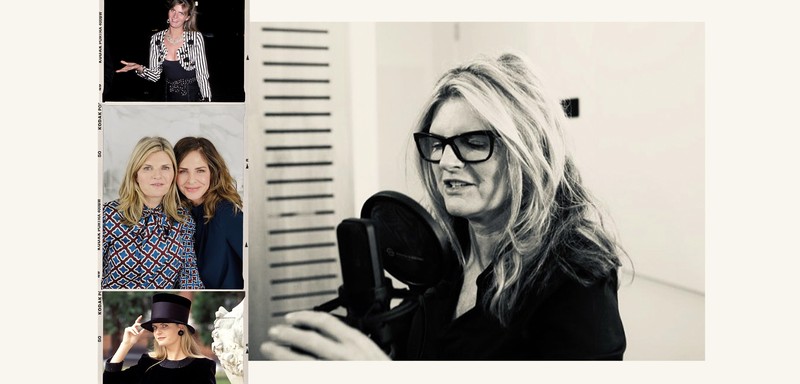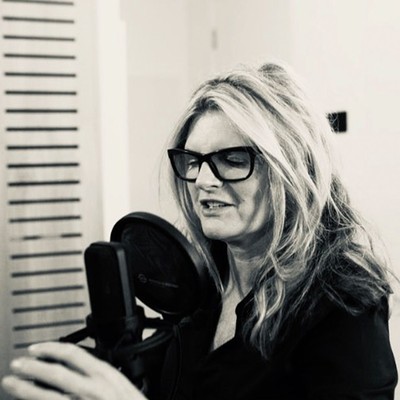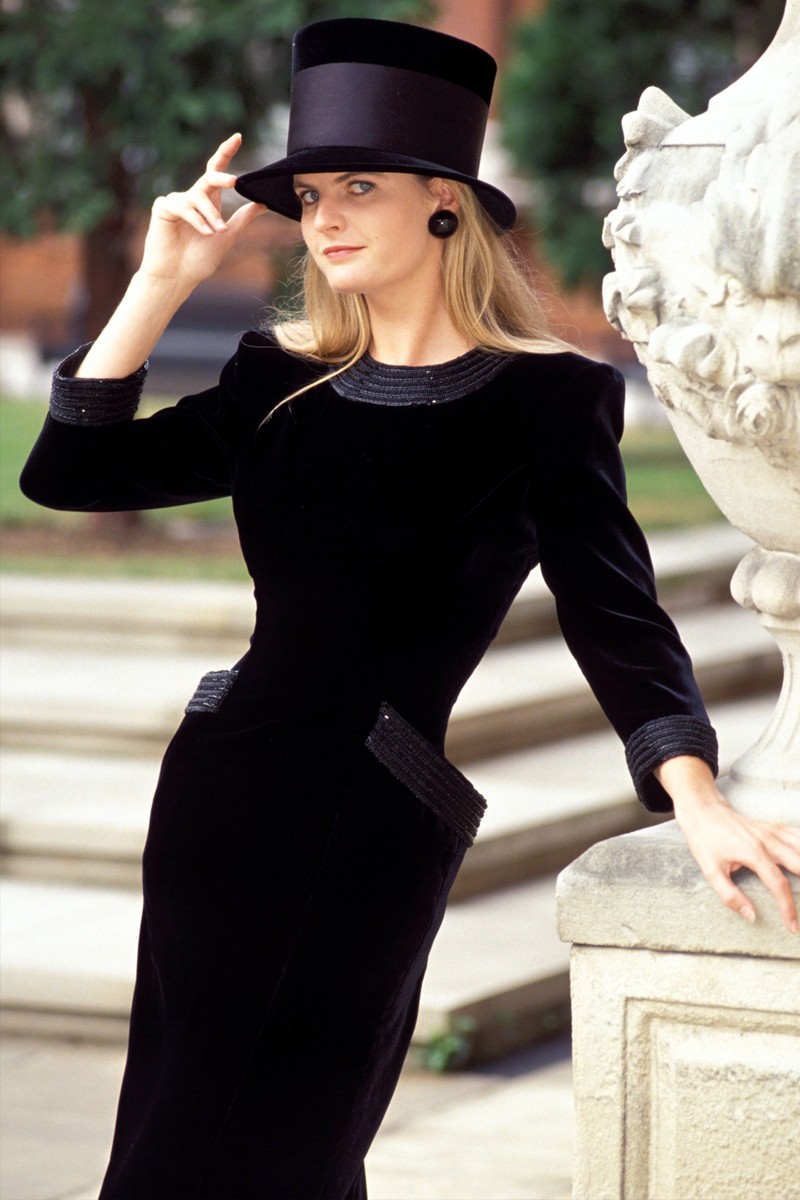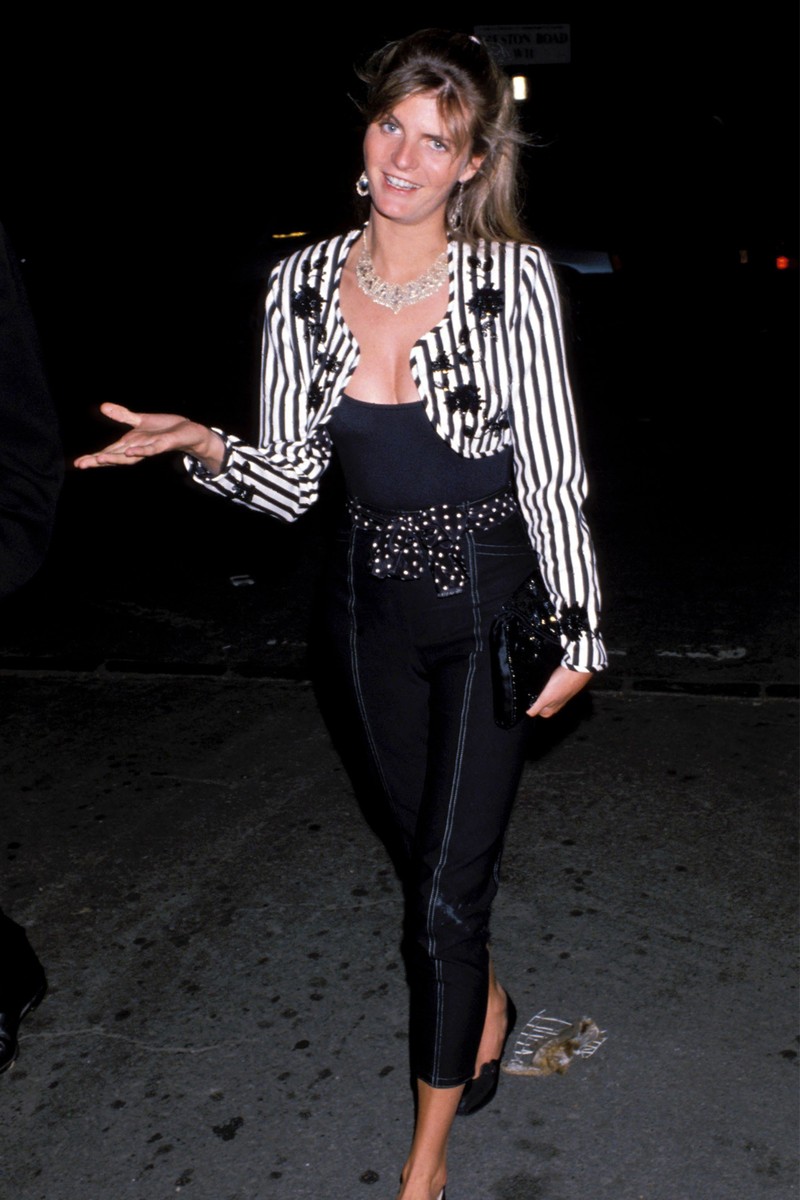

Chapters In My Life: Susannah Constantine
Chapter One:
Growing Up In A Privileged Environment
“I was born into a very privileged environment in terms of money – you could say my parents were well off. My father was part of the mercantile classes, although he liked to think he was more aristocratic than he actually was. As a family, we divided our time between London and Lincolnshire, but I never really saw London as home. I was far better suited to the country. Plus, in Lincolnshire, we had this really amazing housekeeper called Mrs A who was really the only stable adult I had in my life at the time. My mother was severely bipolar but it hadn't started manifesting itself when I was younger – and I certainly wasn't aware of it consciously. She suffered terribly with her mental health and was kind of under the thumb of my father.
“Thankfully, Mrs A was always there, and without her I think I would have been a severe basket case. It sounds terrible, but in some ways I think I loved her more than I loved my parents. My sister was six years older than me, so it was almost like growing up as an only child – she went to school at 12 when I was only six. But I loved being surrounded by nature; I always thought animals were more reliable than adults. I also remember the freedom – freedom to disappear for the whole day, with no one to wonder where you were or what you were doing. My parents certainly wouldn't have noticed I'd gone until I didn't turn up for supper.”
Chapter Two:
Coming Of Age & Meeting Princess Margaret
“At the time, I didn't see my social circle as anything special – it was just a restricted group of people who all came from the same environment and background. There was no interest in venturing outside of this social circle – it was a sort of self-imposed jail sentence in a luxury prison. In fact, I never had an opinion of my own until I met Princess Margaret and her son David. Back then, it was very much a world where you existed rather than lived.
“My main memory of Princess Margaret is that she loved dancing. And she was incredibly maternal – a side not often seen by anyone except her own children. I often think about the photograph she had taken for Town & Country by Patrick Lichfield with her feet up on the sofa with no shoes. I also remember going with her to the opening night of Giselle at the Royal Opera House and we were in the royal box. When it finished, I started wolf whistling, which you’re not supposed to do. David – at least I think it was him – put his hand on my knee and said, ‘Shhh!’ So I did. But Princess Margaret turned around and kept saying, ‘Do another one! Do another one!’
“She was the one who encouraged me to be an independent thinker, to voice my opinion and stand by it. She was quite an open person – except when it came to the Queen. The crown was her biggest boundary. I don't know whether she felt constrained by that or was used to growing up in a goldfish bowl, but she certainly learned to just be herself. She had this incredible resourcefulness and was so practically minded and, in many ways, couldn’t give a f*ck. She could sniff out a sycophant a mile away.”


Chapter Three:
Dating David Linley
“In the book I explain that David and I met through a mutual friend who brought him to a dinner party I was hosting. What I loved about him was that he was a kind of signpost to a world beyond my own; he was an independent thinker who’d started his own business to try and make it on his own. Even the way he dressed was different to the people I'd grown up with – he was the real deal. I’m glad he was my first proper boyfriend because he helped me evolve; I don’t think I would have in the same way with any old raging Sloane. With him, I was thrust into the unfamiliar, but with the safety net of a lovely boyfriend. And Princess Margaret wasn’t the Queen’s sister to me – she was just David’s mum.
“It didn’t last because he didn't ask me to marry him. In retrospect he was focused on his work and had bigger plans for himself; he didn't want what I was brought up to be. And we were so young – sometimes a bit of independence breeds a self-inflated idea of adulthood.”
Chapter Four:
Breaking Into Fashion
“I was raised to have no ambition, so I can’t say fashion was a world I’d always wanted to be part of. But I have always wanted to make my own money. After living in New York for a bit and working as a shop girl in Armani on Madison Avenue, I came back without much of a back-up plan – I just knew I had to get a job. I met Peter Bertelsen who was working with two designers – Alistair Blair and John Galliano. He told me I should meet them and that was it. Working for them, I learned what it meant to have a work ethic, and I really enjoyed being part of a team. I loved watching the clothes being made, the fabric being cut and the sound of the scissors going through silk.
“Trinny and I met at a dinner a few years before we started working together. She thought I was a snob and I thought she was Euro trash. I had no interest in being her friend, and vice versa. By this point I was writing for the Telegraph – but more about sports cars, boxing and cricket – and my editor on the motoring section Eric Bailey soon became editor of the weekend edition and he knew about my background in fashion. Trinny had already mentioned her frustration with the high street and its relationship with fashion media (you could never find any of the clothes used in shoots in the stores) and she said it would be great to read something where you knew you could go and buy the clothes straight away, safe in the knowledge that they didn’t cost the earth. I asked her if I could nick the idea for Eric and she said no to that, but yes to doing it together. We were dead set on making fashion more accessible for women everywhere.”
/https%3A%2F%2Fsheerluxe.com%2Fsites%2Fsheerluxe%2Ffiles%2Farticles%2F2022%2F11%2Fsusannah-main.png?itok=lvhxJ5ox)
Chapter Five:
Working With Trinny & What Not To Wear
“Trinny is much more ambitious than I am and she's got a very good financial brain, which I don't. I'm more the creative one. For the column, I did all the writing and she produced it. We soon hit a wave and we rode it. We decided to set up a website which was designed to make shopping even easier – first of its kind really – but the dotcom crash ruined that idea. We really had to get up again and dust ourselves off – which was when we then got a call from the BBC. They said they had a format they’d like us to present, which felt like the greatest stroke of luck. One door closed and another one opened.
“We filmed a pilot and it took off, but I had no idea how hard making a TV show – even a successful one – would be. We were away from our families for almost half a year and I had to have therapy to be able to leave my children. I found it very difficult. Thank god they were young enough to be able to adapt, but it was hard. The wonderful thing was we were making shows for the native TV stations, not just the BBC, so it was original shows that were developed all around the world – Norway, Sweden, Denmark, Israel, India. We made lifelong friends in each of these places. But it was relentless 18-hour days. I found it hard to come home each time and readjust to being a mother, a wife, running a house and doing everything for myself.”
Chapter Six:
Raising A Family & Fighting Addiction
“When I met my husband Sten, it was love at first sight – for both of us. We met at a party and I found he was someone I could talk to very easily. It turned out Peter Bertelsen was his father, so I realised I knew his parents really well. He’d even been in and out of the office a few times, although I didn’t recognise him at first.
“Getting married and raising our family together has taught me that anyone who says you can have it all as a woman is talking bollocks. You can't. You really can't. And it put such a strain on me trying to do it all. I felt like I constantly had to perform and be the best mother and wife, and the best presenter I could be on television. I loved my family and I loved working with Trinny, but everything else felt like a performance. It’s really hard to find a root cause for addiction. It's pretty much impossible to put your finger on something and say that's when it started or that's the reason why. But the myth of having it all meant a lot of women failed to meet their own expectations, or the expectations of others.
“Reflecting on my addiction and relationship with things like alcohol in the book, I’ve learned so much. It wasn't cathartic or emotional – it was almost like I was writing about someone else's life. What I have come to understand about addiction is that, even when you become actively addicted to something, you’re still the same person you were when that started. And when you stop, you are still the same person. In between, you’re someone else. I realise now I’m probably much younger, emotionally, than my 60 years because I had 12 years of being an active alcoholic. But now I’ve reverted to the person I truly am, which is someone who likes being on their own, living in the country and who isn’t desperately social at all. I get so much out of the simple things in life.”
/https%3A%2F%2Fsheerluxe.com%2Fsites%2Fsheerluxe%2Ffiles%2Farticles%2F2022%2F11%2Fsusannah-constantine-image6.jpg?itok=CJROtAxB)
Chapter Seven:
Strictly Come Dancing & I’m A Celebrity
“I’ll admit it – I did I’m A Celebrity Get Me Out Of Here! for the money. There was no other reason and I know I was paid more than anyone else – poor ITV, I was kicked out first! That’s why I don’t really watch the new series when they come out. I do still watch Strictly though and every time I kick myself for taking myself too seriously and not training enough. I remember expecting to be a world-class dancer on two or three hours of training a day. I remember on the second day of training I came home and I said to my husband, ‘You know what? I’ve found something I'm really good at and I think we could win this.’ I mean, how deluded was I? I still have PTSD from it – the traumas of I’m A Celebrity pale in comparison to Strictly! You can be absolutely murdered for your lack of talent on that show.
“It was horrendous but I made such good friends while I was there. Everybody on that show is the best in their field, and that was a real privilege to be a part of. I also struck gold by being paired up with Anton. We’re still very much in touch and I love him. But I remember him saying he could tell the minute anyone walked through the door if they could dance and, with me, he knew there was no hope!”
The Next Chapter:
Following My Passions
“Even now there's still that drive in me to continue working, to find something else I enjoy. My need for respect is very strong. I want to be able to sit down at the dinner table and say, ‘This is what I'm doing next.’ That’s very important to me. It’s also important to have a constant curiosity – to be searching and to never be complacent with my lot. I've got so much to be grateful for but there's still more to play for. I know I need to grow up, be more responsible and accountable, but I also don’t want to put too much pressure on myself.
“I'm sure I'll keep writing because that's something I've gone back to and still love. Unlike Trinny, I'm not someone who wants the pressure of setting up a new business – I’m not robust enough to do that. I need simplicity in my life and I know I'm not good at doing things alone, except for writing. My next book? It’ll probably be something in the mental health arena. A few weeks ago, I did a book event in Bath with Julia Samuel and it was so powerful. There were probably about 250 people there, predominantly women of our age, and they got so much from it. It might be something that we do together, perhaps with a group therapy element to it, to give women a safe space to talk about their feelings. For now, though, I’m still promoting this book and I'm due to go to America on tour soon.
Anyone who reads the book is guaranteed to learn more about me. It seems to have resonated with lots of people of different ages – maybe because it focuses on my formative years. I want to give young people hope for the future (they’re all so much more empathetic than I was at their age) and I hope they read the book and it gives them a moment of respite from what's going on today. It really is a treasure trove of all my memories.”
Ready For Absolutely Nothing by Susannah Constantine is published by Michael Joseph and available from all good booksellers, including Waterstones.com.
DISCLAIMER: We endeavour to always credit the correct original source of every image we use. If you think a credit may be incorrect, please contact us at info@sheerluxe.com.

